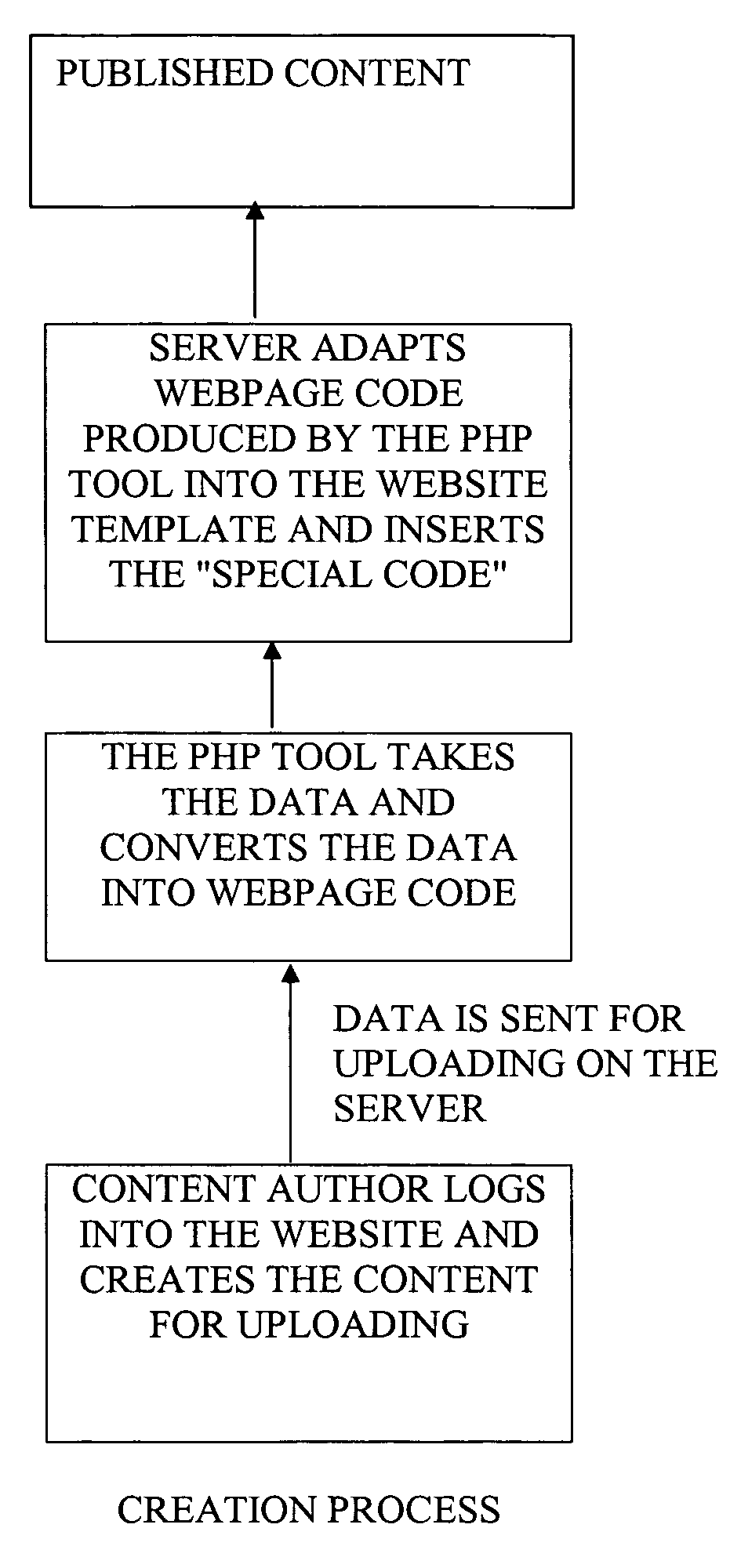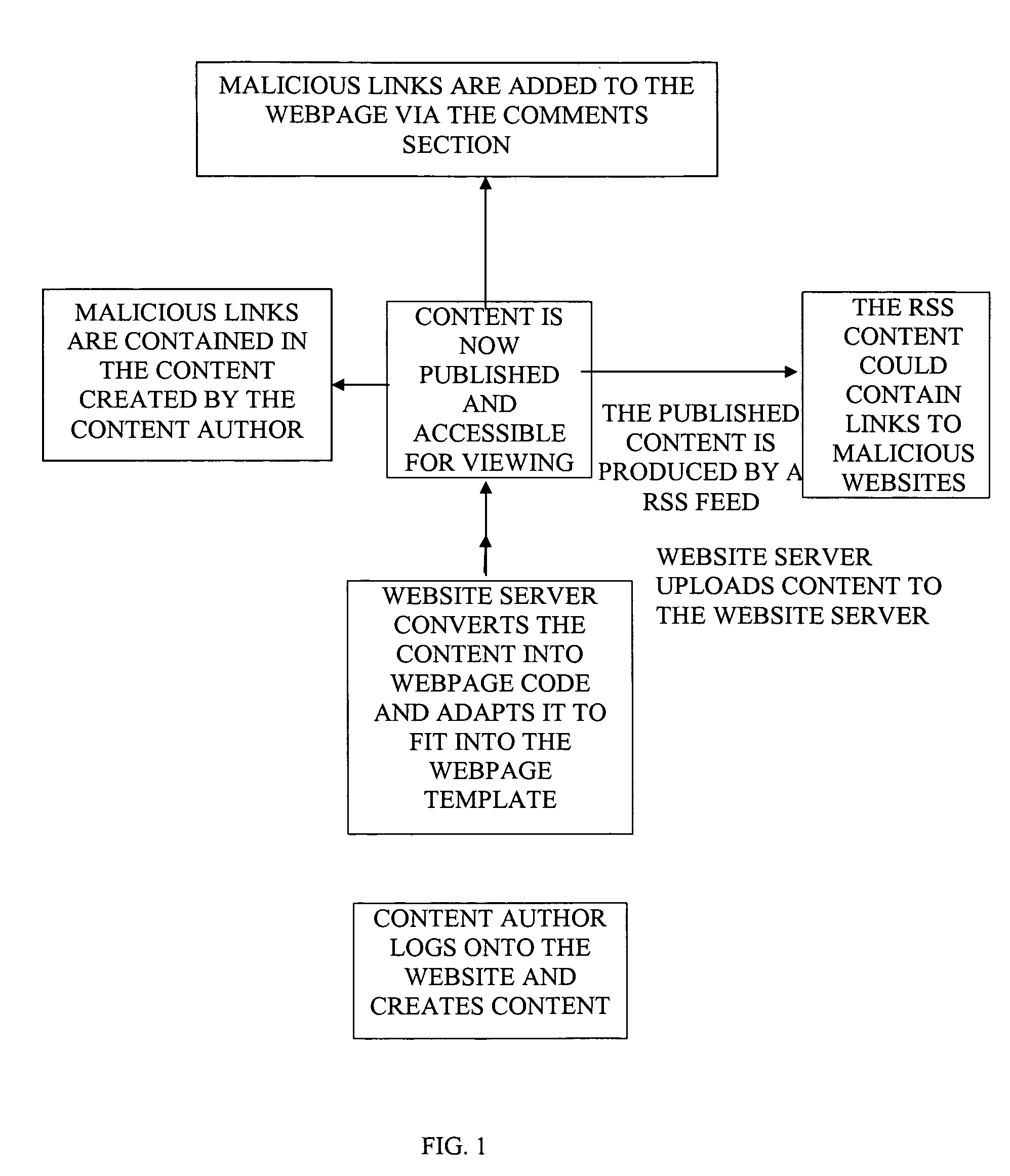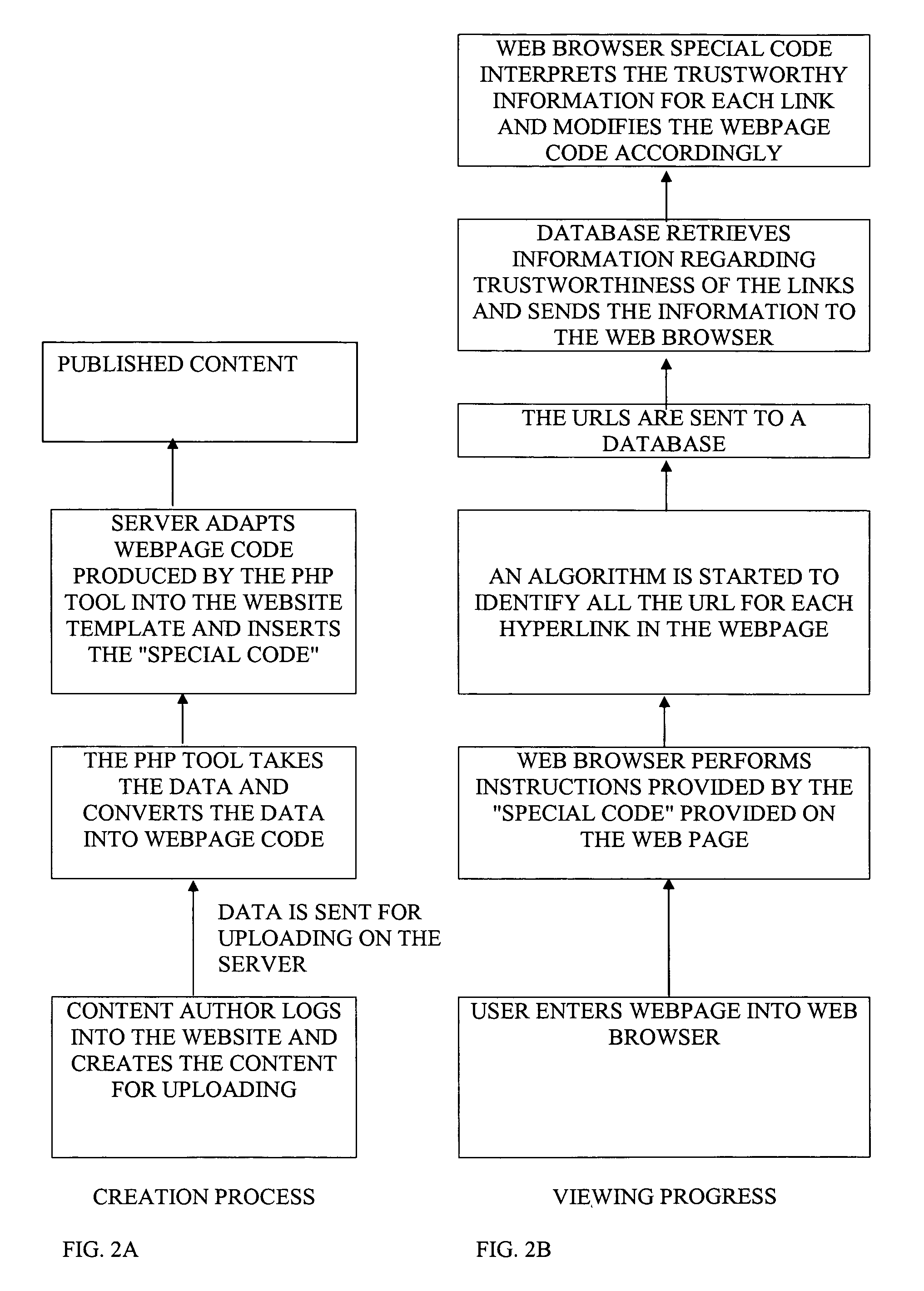Website content regulation
a technology for site content and content regulation, applied in the field of website content regulation, can solve the problems of significant drawbacks of detection procedures that are entirely server-based, and achieve the effect of reducing the load on the server and being convenient to scan conten
- Summary
- Abstract
- Description
- Claims
- Application Information
AI Technical Summary
Benefits of technology
Problems solved by technology
Method used
Image
Examples
Embodiment Construction
[0032]Before describing embodiments of the invention in detail, the steps involved in creating and viewing content on a typical Web 2.0 website will be considered with reference to FIG. 1.
[0033]A content author typically adds content to the Web 2.0 website by logging into the website via a personal account. The author might be presented with a submission webpage for the user to upload content in the form of text, images, and multimedia. The content may contain hyperlinks which are associated with URLs of external websites. The content may also include an RSS feed. The RSS feed may, for example, be from a news website importing links to headline stories. A server-based programming technology, for example, PHP, then converts the submitted content into a standardised web page format such as HTML (or WML). The resulting webpage will typically conform to a “house style”.
[0034]The website server then publishes the web page within the content author's section (with appropriate access restr...
PUM
 Login to View More
Login to View More Abstract
Description
Claims
Application Information
 Login to View More
Login to View More - R&D
- Intellectual Property
- Life Sciences
- Materials
- Tech Scout
- Unparalleled Data Quality
- Higher Quality Content
- 60% Fewer Hallucinations
Browse by: Latest US Patents, China's latest patents, Technical Efficacy Thesaurus, Application Domain, Technology Topic, Popular Technical Reports.
© 2025 PatSnap. All rights reserved.Legal|Privacy policy|Modern Slavery Act Transparency Statement|Sitemap|About US| Contact US: help@patsnap.com



